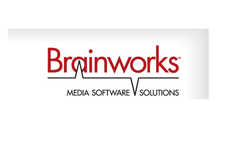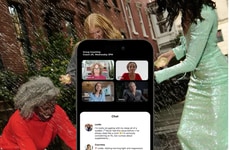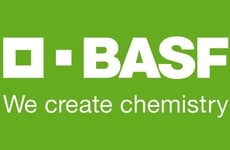Brianna Kilcullen, Social Responsibility & Traceability Manager at prAna
For decades, apparel company prAna has focused on providing responsibly sourced and ethical products. Brianna Kilcullen, Social Responsibility & Traceability Manager at prAna, spoke to Trend Hunter about merging those philosophical tenets with forward-thinking innovation.
TH: Tell us about yourself.
BK: I’ve been at prAna for a little over a year and a half. I moved from the east coast where I was working at Under Armour, which is one of the ultimate innovators, and I worked there for almost four years. One of the most valuable things I learned during my time at UA was that it was unacceptable to not try something just because it was the status quo and the way it was always done, which really impacted me by challenging the world around me.
I’ve been in the apparel industry for about five years now, mostly in supply chain. I have a business background, but I was always really inspired with and fascinated by human rights, like what large corporations’ responsibilities are in the countries where they operate. That’s my bread and butter, seeing what the impact is from a human rights perspective and an environmental perspective on the products we’re making and the potential they have for positive impact.
It’s an awesome job; I love it. I get to see the impact of the apparel industry, and how changes in governments and political situations impact us doing business.
What are some general trends you’ve noticed in your industry?
Within the past year I’ve seen a huge shift in the apparel industry as a whole. We’re seeing massive amounts of bankruptcies, brick and mortar falling — a shift in the entire retail experience and what that looks like. Retail disruptors like Amazon are coming in, and it’s really shifting the entire industry and how we operate. It’s really fascinating. So I’ve seen an opportunity for prAna in that mix to redefine what we stand for and innovate: even the concepts around our social and environmental impacts in the places we operate and how we function as an apparel brand.
I’ve started a team called the Innovators of Impact. We’re focused on the product, but it’s actually a way of thinking that involves questioning our practices. For example, right now in the apparel industry it takes 18-20 months from design to consumer, whereas with a car, you can have it designed and on your driveway within seven days. So the apparel industry has missed the boat in terms of incorporating technology. It’s largely continuing to operate on a very old-school mentality of creating a product and sending it to a factory. I’ve seen all this change around me and seen that there are huge opportunities to partner with other industries that have invested in technology within, and then to apply those same philosophies to apparel.
The difference at prAna is that we are conscious while we innovate, making sure that we’re aware of the impact that it has on others around us and on the environment. We’re not just going, “Oh, this is super cool and innovative! Let’s do this!” but then it actually has a more negative impact than what we were doing before. So those are the two pieces that I’m conscious of in my role.
If you just look out and read the news, you’ll see companies coming out with the latest technology and innovations, but I think that very rarely are people aware of why they’re doing that. They’re not asking the questions of how they’ll be able to implement it or what it’s solving. Instead everyone just jumps onto the next bandwagon. That’s something that we’re really conscious of, but we’re a small company and our expertise has not been in this idea of innovation and technology. It’s largely been around mindfulness and consciousness when we’re making our products, so it’s really cool because I’m trying to bridge the two: let’s be mindful and conscious, but let’s also accept the fact that we can change and evolve our previous notion of how things are done.
How do you and your team generate great ideas? Do you have certain rituals to make creativity happen?
We meet often, and I’ll ask for people to bring in something that inspired them or something that they were able to innovate within. Whether it’s personal or professional, something that they were able to tackle and think about differently from how they had before. It can be something as small as a different approach to something in your everyday life, like how you take out the garbage. So we’ll usually start off meetings with those personal or professional actions that we’ve taken.
Also we’ll take in spotting trends. We have subscriptions to a lot of newsletters and journals, and I’ll ask people to bring in trends that we’re seeing outside, in different industries, whether that’s food or electronics or whatever else is out there, but stuff that inspires them. Then we can see the team dynamic of what people are feeling really passionate about and how we can take that energy and infuse it into the work that we’re doing as a group.
What are some barriers to innovation? How do you get around them?
The biggest barriers to innovation are the ideas around cost: that you can’t innovate without having a lot of dollar signs to take that risk. Trying to even figure out the right budget, how much should we have each year in order to take an opportunity, etc. We try to mitigate that by working closely internally with our executive team on business priorities that they need to solve. That way, if we are going to put a dollar sign into investigating something, we know the problem is much larger than the dollar signs that aren’t solving it.
But it’s hard. Say you’re talking to a new materials innovation company: the initials figures can be as high as $50,000 just to start talking. We’re a $120 million company; that’s not gonna fly [laughs]. So I think it’s all about negotiating and within those barriers being very transparent and candid. It’s about saying, “What’s the ultimate goal that we want to solve?” And if you can align on that goal, you can find a way to make things happen.
Another really difficult part is changing people’s mindsets internally. It’s so difficult to challenge a process that’s in place and isn’t necessarily broken, it’s just that we’ve evolved. Especially in the apparel industry. It’s so chaotic, and people are just trying to get product out the door and run the general business, that saying, “I know that in order to keep my job we need to sell all this product, but we want to challenge the entire way we think about retail...” -- people are like “Go f**k yourself!” [laughs] I’d be lying if I said it isn’t scary, and it doesn’t feel like you’re going out on a limb, and it doesn’t feel like you’re being insulting. So I try to be incredibly cautious and conscientious, and say, “We’re aware this is what you’re doing, but I’m just throwing this out there.”
How do you identify trends? What resources do you and your team use to spot trends and insights?
I work with our designers, and our designers will actually do inspiration trips. Those aren’t related to the team I run, but I tap into those experiences of travelling to other places. We do “comp shopping,” which is going to other competitors or other retailers and looking around to see what they’re doing. Those tangible visits help show us where the trends are going. Then also we subscribe to Just-Style Sourcing Journal and other publications and subscriptions too that are spotting those trends for us. And now we’re participating in Future Festival.
We also tap into our own behaviors, like asking when the last time is that we went to a mall, or what is going on in the world around us that inspires us — the recent election was definitely a hot conversation for us.
I’m just trying to innovate and push back, to look at other industries that are masters of things we’re looking at — food, pharmaceuticals, electronics — and taking those different mindsets and ways that they evolve and then bringing those back and thinking about them for us.
Do you have specific rituals for resetting to be creative?
We’re just now starting off on this process (the team that I created is not even a year old) so there’s still so much buzz and excitement over the team itself and the opportunities that could come out of the work that they’re doing. I’d say it’s actually the opposite in that this isn’t people’s full-time role. I’m managing a team where people see the potential and want to be a part of it, because we don’t have a set innovation or R&D team. So this is actually a lot of our team’s creative outlet, even coming and doing the work that we’re doing. We’re all busy innovating in our own jobs, but then, coming into the meeting with all of us, we put that on the side, think ahead, and use that energy.
What are some examples of things you can do to create a culture of innovation?
The biggest thing is asking the question, “Why?” That’s what it’s been for me. It’s that you don’t accept what’s been given to you and say, “Ok, this is how we do it.” There’s a balance between being really conscientious and recognizing that someone worked hard to get us to where we are, on the one hand, and asking how we can expand upon that work and push it to another frontier (essentially creative destruction), on the other.
I’m biased because I’m a huge proponent of things like human rights and environmentalism, but I wonder how big businesses got to the point where that’s a nice thing to have, but it’s not a requirement for operating. There’s a great book I’m reading called ‘Conscious Capitalism’ by John Mackey, the CEO of Whole Foods, and it says that in the past, the life expectancy wasn’t much past 40 years old, so people weren’t alive to see the impacts. There was this short-term gain as opposed to thinking about it as a marathon. And then huge innovations like the internet, the fall of communism and the rise of democracy, that have really brought the idea of measuring our impact and measuring what other people are doing in the world that’s impacting us.
So you have to look at what we’ve been doing and also recognize that that doesn’t mean we have to keep doing it. Part of it is that these people didn’t know what we know now. And that’s the hardest part: sometimes I think, “What do I not know now that I’ll know later?” Something that I’m still doing because someone hasn’t thought of an innovative way to question it or change it.
Describe the future.
We’re starting to see it in the apparel industry with “Made in the USA” and what that looks like. I’m not a huge proponent of it, because I know what it looks like globally and it’s not the type of industry that’s going to grow American jobs and give that back in its current state. Not to mention a local for local mentality. The fastest growing markets are not in the US, so companies producing in the US will have to now export to those countries which increases carbon footprint and defeats the purpose, so we have to think globally. What does the sustainable business model for the apparel industry look like based off the market you are selling to?
The next is around robots and automation within manufacturing and outside of it. It’s been pretty widely acknowledged that lead time on a product from the apparel industry is the biggest bottleneck. What would that look like with automation? Because the cut-and-sew piece of making a shirt is such a small piece of entire suite of supply chain partners that come together to make that garment. So a move towards automation around the entire supply chain and not just manufacturing.
And then moving beyond the supply chain altogether and asking: what is apparel? Do we need all this stuff? Are people moving more toward putting their money behind experiences and electronics and cars? So do you innovate as a company that offers experiences to imitate those other industries that customers are willing to buy in? Or do you keep trying to sell alone as a product? I think that if an Apple or another tech company came into the apparel industry, it would turn it on its head.
What’s the craziest thing you have done to get creative inspiration?
On our last trip to India where we filmed prAna's "Why Organic Cotton Matters" video, there was a holiday in the rural area we were visiting, and we jumped ad hoc out of the car and joined in a local village's dancing, and one of the young women included me in the circle.
It's also not exactly crazy, but I draw inspiration from the music I listen to to motivate me. Chance the Rapper has been on repeat this past year and I love what he is doing in Chicago.
TH: Tell us about yourself.
BK: I’ve been at prAna for a little over a year and a half. I moved from the east coast where I was working at Under Armour, which is one of the ultimate innovators, and I worked there for almost four years. One of the most valuable things I learned during my time at UA was that it was unacceptable to not try something just because it was the status quo and the way it was always done, which really impacted me by challenging the world around me.
I’ve been in the apparel industry for about five years now, mostly in supply chain. I have a business background, but I was always really inspired with and fascinated by human rights, like what large corporations’ responsibilities are in the countries where they operate. That’s my bread and butter, seeing what the impact is from a human rights perspective and an environmental perspective on the products we’re making and the potential they have for positive impact.
It’s an awesome job; I love it. I get to see the impact of the apparel industry, and how changes in governments and political situations impact us doing business.
What are some general trends you’ve noticed in your industry?
Within the past year I’ve seen a huge shift in the apparel industry as a whole. We’re seeing massive amounts of bankruptcies, brick and mortar falling — a shift in the entire retail experience and what that looks like. Retail disruptors like Amazon are coming in, and it’s really shifting the entire industry and how we operate. It’s really fascinating. So I’ve seen an opportunity for prAna in that mix to redefine what we stand for and innovate: even the concepts around our social and environmental impacts in the places we operate and how we function as an apparel brand.
I’ve started a team called the Innovators of Impact. We’re focused on the product, but it’s actually a way of thinking that involves questioning our practices. For example, right now in the apparel industry it takes 18-20 months from design to consumer, whereas with a car, you can have it designed and on your driveway within seven days. So the apparel industry has missed the boat in terms of incorporating technology. It’s largely continuing to operate on a very old-school mentality of creating a product and sending it to a factory. I’ve seen all this change around me and seen that there are huge opportunities to partner with other industries that have invested in technology within, and then to apply those same philosophies to apparel.
The difference at prAna is that we are conscious while we innovate, making sure that we’re aware of the impact that it has on others around us and on the environment. We’re not just going, “Oh, this is super cool and innovative! Let’s do this!” but then it actually has a more negative impact than what we were doing before. So those are the two pieces that I’m conscious of in my role.
If you just look out and read the news, you’ll see companies coming out with the latest technology and innovations, but I think that very rarely are people aware of why they’re doing that. They’re not asking the questions of how they’ll be able to implement it or what it’s solving. Instead everyone just jumps onto the next bandwagon. That’s something that we’re really conscious of, but we’re a small company and our expertise has not been in this idea of innovation and technology. It’s largely been around mindfulness and consciousness when we’re making our products, so it’s really cool because I’m trying to bridge the two: let’s be mindful and conscious, but let’s also accept the fact that we can change and evolve our previous notion of how things are done.
How do you and your team generate great ideas? Do you have certain rituals to make creativity happen?
We meet often, and I’ll ask for people to bring in something that inspired them or something that they were able to innovate within. Whether it’s personal or professional, something that they were able to tackle and think about differently from how they had before. It can be something as small as a different approach to something in your everyday life, like how you take out the garbage. So we’ll usually start off meetings with those personal or professional actions that we’ve taken.
Also we’ll take in spotting trends. We have subscriptions to a lot of newsletters and journals, and I’ll ask people to bring in trends that we’re seeing outside, in different industries, whether that’s food or electronics or whatever else is out there, but stuff that inspires them. Then we can see the team dynamic of what people are feeling really passionate about and how we can take that energy and infuse it into the work that we’re doing as a group.
What are some barriers to innovation? How do you get around them?
The biggest barriers to innovation are the ideas around cost: that you can’t innovate without having a lot of dollar signs to take that risk. Trying to even figure out the right budget, how much should we have each year in order to take an opportunity, etc. We try to mitigate that by working closely internally with our executive team on business priorities that they need to solve. That way, if we are going to put a dollar sign into investigating something, we know the problem is much larger than the dollar signs that aren’t solving it.
But it’s hard. Say you’re talking to a new materials innovation company: the initials figures can be as high as $50,000 just to start talking. We’re a $120 million company; that’s not gonna fly [laughs]. So I think it’s all about negotiating and within those barriers being very transparent and candid. It’s about saying, “What’s the ultimate goal that we want to solve?” And if you can align on that goal, you can find a way to make things happen.
Another really difficult part is changing people’s mindsets internally. It’s so difficult to challenge a process that’s in place and isn’t necessarily broken, it’s just that we’ve evolved. Especially in the apparel industry. It’s so chaotic, and people are just trying to get product out the door and run the general business, that saying, “I know that in order to keep my job we need to sell all this product, but we want to challenge the entire way we think about retail...” -- people are like “Go f**k yourself!” [laughs] I’d be lying if I said it isn’t scary, and it doesn’t feel like you’re going out on a limb, and it doesn’t feel like you’re being insulting. So I try to be incredibly cautious and conscientious, and say, “We’re aware this is what you’re doing, but I’m just throwing this out there.”
How do you identify trends? What resources do you and your team use to spot trends and insights?
I work with our designers, and our designers will actually do inspiration trips. Those aren’t related to the team I run, but I tap into those experiences of travelling to other places. We do “comp shopping,” which is going to other competitors or other retailers and looking around to see what they’re doing. Those tangible visits help show us where the trends are going. Then also we subscribe to Just-Style Sourcing Journal and other publications and subscriptions too that are spotting those trends for us. And now we’re participating in Future Festival.
We also tap into our own behaviors, like asking when the last time is that we went to a mall, or what is going on in the world around us that inspires us — the recent election was definitely a hot conversation for us.
I’m just trying to innovate and push back, to look at other industries that are masters of things we’re looking at — food, pharmaceuticals, electronics — and taking those different mindsets and ways that they evolve and then bringing those back and thinking about them for us.
Do you have specific rituals for resetting to be creative?
We’re just now starting off on this process (the team that I created is not even a year old) so there’s still so much buzz and excitement over the team itself and the opportunities that could come out of the work that they’re doing. I’d say it’s actually the opposite in that this isn’t people’s full-time role. I’m managing a team where people see the potential and want to be a part of it, because we don’t have a set innovation or R&D team. So this is actually a lot of our team’s creative outlet, even coming and doing the work that we’re doing. We’re all busy innovating in our own jobs, but then, coming into the meeting with all of us, we put that on the side, think ahead, and use that energy.
What are some examples of things you can do to create a culture of innovation?
The biggest thing is asking the question, “Why?” That’s what it’s been for me. It’s that you don’t accept what’s been given to you and say, “Ok, this is how we do it.” There’s a balance between being really conscientious and recognizing that someone worked hard to get us to where we are, on the one hand, and asking how we can expand upon that work and push it to another frontier (essentially creative destruction), on the other.
I’m biased because I’m a huge proponent of things like human rights and environmentalism, but I wonder how big businesses got to the point where that’s a nice thing to have, but it’s not a requirement for operating. There’s a great book I’m reading called ‘Conscious Capitalism’ by John Mackey, the CEO of Whole Foods, and it says that in the past, the life expectancy wasn’t much past 40 years old, so people weren’t alive to see the impacts. There was this short-term gain as opposed to thinking about it as a marathon. And then huge innovations like the internet, the fall of communism and the rise of democracy, that have really brought the idea of measuring our impact and measuring what other people are doing in the world that’s impacting us.
So you have to look at what we’ve been doing and also recognize that that doesn’t mean we have to keep doing it. Part of it is that these people didn’t know what we know now. And that’s the hardest part: sometimes I think, “What do I not know now that I’ll know later?” Something that I’m still doing because someone hasn’t thought of an innovative way to question it or change it.
Describe the future.
We’re starting to see it in the apparel industry with “Made in the USA” and what that looks like. I’m not a huge proponent of it, because I know what it looks like globally and it’s not the type of industry that’s going to grow American jobs and give that back in its current state. Not to mention a local for local mentality. The fastest growing markets are not in the US, so companies producing in the US will have to now export to those countries which increases carbon footprint and defeats the purpose, so we have to think globally. What does the sustainable business model for the apparel industry look like based off the market you are selling to?
The next is around robots and automation within manufacturing and outside of it. It’s been pretty widely acknowledged that lead time on a product from the apparel industry is the biggest bottleneck. What would that look like with automation? Because the cut-and-sew piece of making a shirt is such a small piece of entire suite of supply chain partners that come together to make that garment. So a move towards automation around the entire supply chain and not just manufacturing.
And then moving beyond the supply chain altogether and asking: what is apparel? Do we need all this stuff? Are people moving more toward putting their money behind experiences and electronics and cars? So do you innovate as a company that offers experiences to imitate those other industries that customers are willing to buy in? Or do you keep trying to sell alone as a product? I think that if an Apple or another tech company came into the apparel industry, it would turn it on its head.
What’s the craziest thing you have done to get creative inspiration?
On our last trip to India where we filmed prAna's "Why Organic Cotton Matters" video, there was a holiday in the rural area we were visiting, and we jumped ad hoc out of the car and joined in a local village's dancing, and one of the young women included me in the circle.
It's also not exactly crazy, but I draw inspiration from the music I listen to to motivate me. Chance the Rapper has been on repeat this past year and I love what he is doing in Chicago.
Trend Themes
1. Shift in Retail Experience - Opportunity for prAna to redefine their social and environmental impacts and innovate in the changing apparel industry.
2. Technology Integration in Apparel Industry - Opportunity for the apparel industry to incorporate technology and partner with industries that have invested in technology.
3. Culture of Innovation - Creating a culture of innovation by asking why, challenging traditional processes, and being conscious of the impact on human rights and the environment.
Industry Implications
1. Apparel - Opportunity for apparel companies to redefine their social and environmental impacts and innovate in response to changing retail dynamics.
2. Technology - Opportunity for technology companies to partner with the apparel industry to integrate technology into their manufacturing and supply chain processes.
3. Retail - Opportunity for retailers to shift their retail experience, incorporating new technologies and focusing on social and environmental impacts.
3.4
Score
Popularity
Activity
Freshness






















